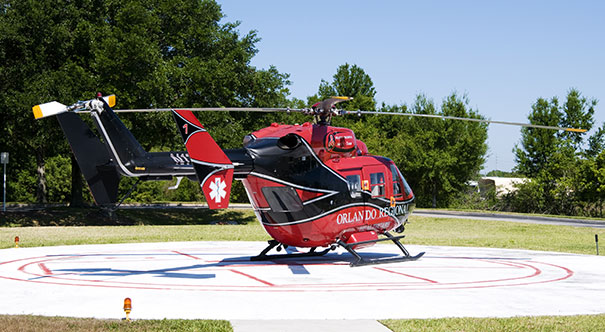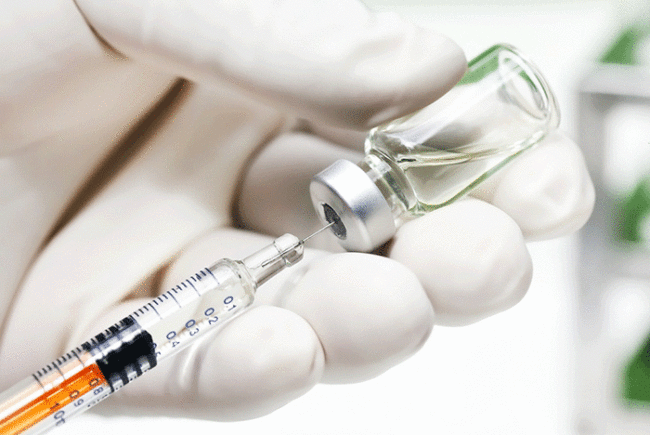 |
|
Photo credit: John Panella / Shutterstock.com In 2014 there were more than 400,000 patient transports via helicopter EMS, one of the many reasons health facility managers should proactively maintain their hospital's helipad. |
What’s the impact of a helicopter crash?
Imagine the day you are sitting in your office and the call comes. A helicopter has just crashed at your hospital helipad. Thoughts flood into your mind:
What do we do?
- Is there an emergency plan?
- Whom do I notify?
- Have our facilities been damaged?
- Did we build and manage the helipad properly as a part of the facility?
- Did we do everything we could to have prevented this?
- What will be the litigation and costs?
There is nothing quite as unnerving to an organization, a community and a hospital’s reputation as an aviation accident. The hospital helipad is an integral part of your hospital facility and should not be treated as just a slab of concrete or steel, especially considering the fact that most passengers on air ambulance flights are critical care patients who may not even be aware that they are aboard a helicopter.
If you look at the numbers, the possibility of this type of occurrence is very real. In 1980, there were 50 helicopter emergency medical services (EMS) aircraft in service in the United States; as of 2015 there were 1,015. And, in 2014 alone, there were more than 400,000 patient transports via helicopter EMS with that number only set to increase. How many takeoffs and landings occur at your hospital system’s helipads each day, month, and year?
The immediate steps following an accident will involve and consume vast amounts of time and resources from a hospital and have lingering effects on hospital personnel, patients, and the perception the community and future patients will have of your hospital. The old adage applies, “You can do a million things right, but screw up just one thing and … .”
We often tell our clients that aviation accidents, when they do occur, will be spectacular, just not in a good way for your organization.
How Did This Happen?
Both major and minor helicopter accidents occur when the holes in the Swiss cheese line up. This axiom alludes to all aviation accidents and the events (holes) that line up leading to an accident. In retrospect, through accident analysis, the investigation usually uncovers a series of holes that eventually line up and are causal factors in an accident.
Facility managers must be cognizant of making sure the holes in the cheese do not line up and stay on guard to look for the signs. Parts of those signs are in and around the landing environment where the helicopter operates.
Unfortunately, there are many opportunities for holes in the Swiss cheese of aviation — from pilots, aircrew training, personal conflicts, fatigue, weather, mechanical malfunctions, to the working environment we operate in and around, which includes helipads.
Fortunately, aviation experts have created a lot of best practices that have evolved over the years to handle many of these holes and mitigate them. From training, to procedures, to greater awareness in the identification and mitigation of risks, to the common sense and proven business view of money spent beforehand to decrease risk is always money well-spent compared with the costs after an accident.
Regrettably, there are numerous gaps and risks that remain.
The rules and regulatory oversight surrounding hospital helipads are not as robust as those for our public airports. You would expect that a level of standardization and adherence to that standard would be mandatory at the landing location on hospital grounds. However, crash dangers, vertical obstructions, lack of personal protective equipment, causes for slips, trips, falls and other minor accidents waiting to happen exist at hospital helipads.
Several factors can contribute to this, including lack of available real estate on hospital grounds, lack of resources or lack of willingness to commit resources. The old standbys of “It’s always been like that” or “We haven’t had a crash yet,” can be ever-present.
There are simple steps that hospitals and facility managers can take to ensure that this vital life-saving tool is as safe as possible to ensure aircrew and patient safety. We should remind ourselves that aircrew are sometimes awakened from a deep sleep and airborne in as few as 10 minutes, having to perform at the top of their aviation skills. Hospital management owes it to the aircrew, assisting staff and paying patients to have the safest helipad possible.
Proactive vs. reactive
Pilots and managers of aviation operations tend to fall into two major baskets — one proactive and the other reactive. The proactive is better suited for frequency; whereas, the reactive is suited for severity. What this means is that a proactive approach to aviation focuses on the many (more frequent) dangers and risks in aviation, and operates within this mindset, whereas the reactive waits for the big event (severe) to occur before it takes action.
My experience in aviation operations is that I would always rather lead and be led by a team that is proactive. Focusing on frequency and anticipation leads to training and procedures that can reduce risks, cover the gaps that may not be seen, and is ready to handle the severe events, when and if they occur. The morale and trust in the proactive approach is more robust and can be sustained long term vs. the reactive.
A 2011 survey by the National EMS Pilots Association gives us some insight into whether hospitals are assuming a proactive or reactive posture regarding hospital helipad safety, management and maintenance. The study cited that 49 percent of aircrew don’t know who has oversight of helipad design, construction, licensing and safety. Other findings include:
- 33 percent of aircrew said that they have been in one or more incidents at a hospital helipad involving personal injury or property damage.
- 41 percent of aircrew reported one or more accidents at hospital helipads involving aircraft damage.
Because even minor aircraft accidents are able to cause long delays in emergency air medical transport and aircraft damage costs can exceed $100,000 (even for minor incidents), a proactive allocation of time, effort and resources is warranted to reduce this risk and fill in the safety gaps.
The return on investment is justified and should be an easy sell for hospitals in their budgetary planning, but only if the awareness is there to advocate for it. The most startling finding for our company was that 72 percent of aircrew believe the design, construction and maintenance of the hospital helipad in their operating areas did not meet the generally accepted or current guidelines.
If three-fourths of your clinical staff thought the tools, design and facilities in which they work were not up to generally accepted guidelines, what would your hospital do?
Now, what do I do?
In psychology, cognitive behavior is when our minds provide the illusion of explanatory depth, and makes us think that we fully understand something, when we actually don’t. Some call this the “black swan,” where we think we have a good understanding of risk and exposure but then, an event happens that makes us pause and utter the phrase, “I never saw that one coming.” Whether it is the Ebola outbreak in 2014 or the financial meltdown in 2006, who had thought and actually taken steps to prepare or reduce risk for a rare virus or a bunch of subprime mortgages that no one thought could have caused such panic?
Fortunately, in the realm of hospital helipads, there are relatively simple and cost- effective measures that can be put into place to raise awareness and proactively reduce the risk.
The first thing hospitals can do is to perform a biennial risk assessment on their helipads and helipad network. A quantitative assessment conducted every two years can evaluate your risks in the:
- Design of your helipads
- Procedures and training on and around the helipad (for aircrew, clinical staff, security and facility maintenance). Did we build and manage the helipad properly as a part of the facility?
- Environmental factors (such as location, geography, weather patterns and surrounding air traffic).
This recurring risk assessment serves two purposes. It identifies risks to the system on a recurring schedule that will allow for proactive improvements. It also sends the message to the hospital staff that the leadership at the hospital takes patient and staff safety very seriously.
The second thing hospitals can implement is a safety and maintenance system for the helipads. Through the use of a Web-based tool or software, an accountability and oversight system can be implemented that clearly identifies, captures and logs safety reporting, training, maintenance and inspections. This is an essential step in a proactive approach that is ongoing. It is not enough to inspect every two years, pat each other on the back and say, “We are good.” To be proactive is to be continuous, vigilant and have the frequency to guard against complacency.
Finally, when and if hospitals contemplate a new helipad or adjustments to their current helipads, an aviation expert should be involved along with the architectural and engineering team. Many times, hospital helipads are designed and constructed with no input or guidance from aviation experts. That would be akin to building a new hospital wing or emergency department without input from nurses, doctors and staff. Oftentimes, when we review designs or completed hospital helipads, we ask if anyone involved in the design process has ever flown or even been in a helicopter. Too many times the answer is, “No.”
Is your helipad ready to fly?
The good news is that these are economical, practical steps that can be implemented and are readily available in the marketplace. The cost to implement is miniscule — pennies compared with the thousands of dollars that can be lost because of injury to patients and staff, damage to aircraft, property damage, litigation, increased insurance costs and negative publicity and brand perception that your hospital can experience due to an accident.
When the aircrew lands with a critical patient onto your helipad, with security personnel standing by, clinical staff prepared to receive them, and the patient hoping for a speedy and safe entry into your facility, I urge you to be a proactive leader and facility manager — one is confident that everything that needed to be done was completed beforehand. That is leadership and is exactly what hospital helipads throughout this country need.
Michael Middleton is president of White Top Aviation, a division of M3 Partners LLC in Greenville, S.C. He is a retired Marine Corps officer and pilot with experience in aviation operations and helipad and landing-zone analysis. He can be reached at michael@m3partnersllc.com.





